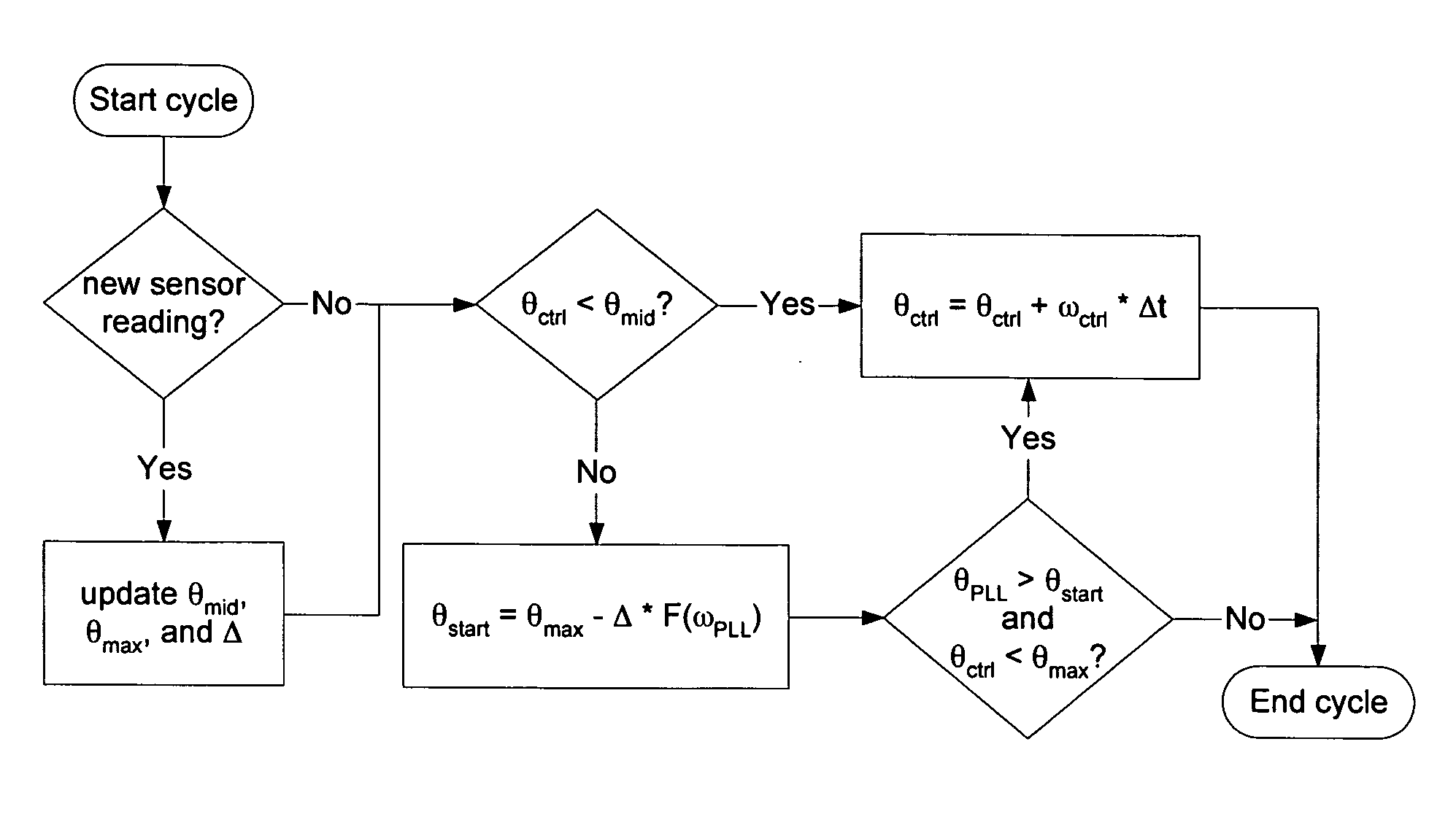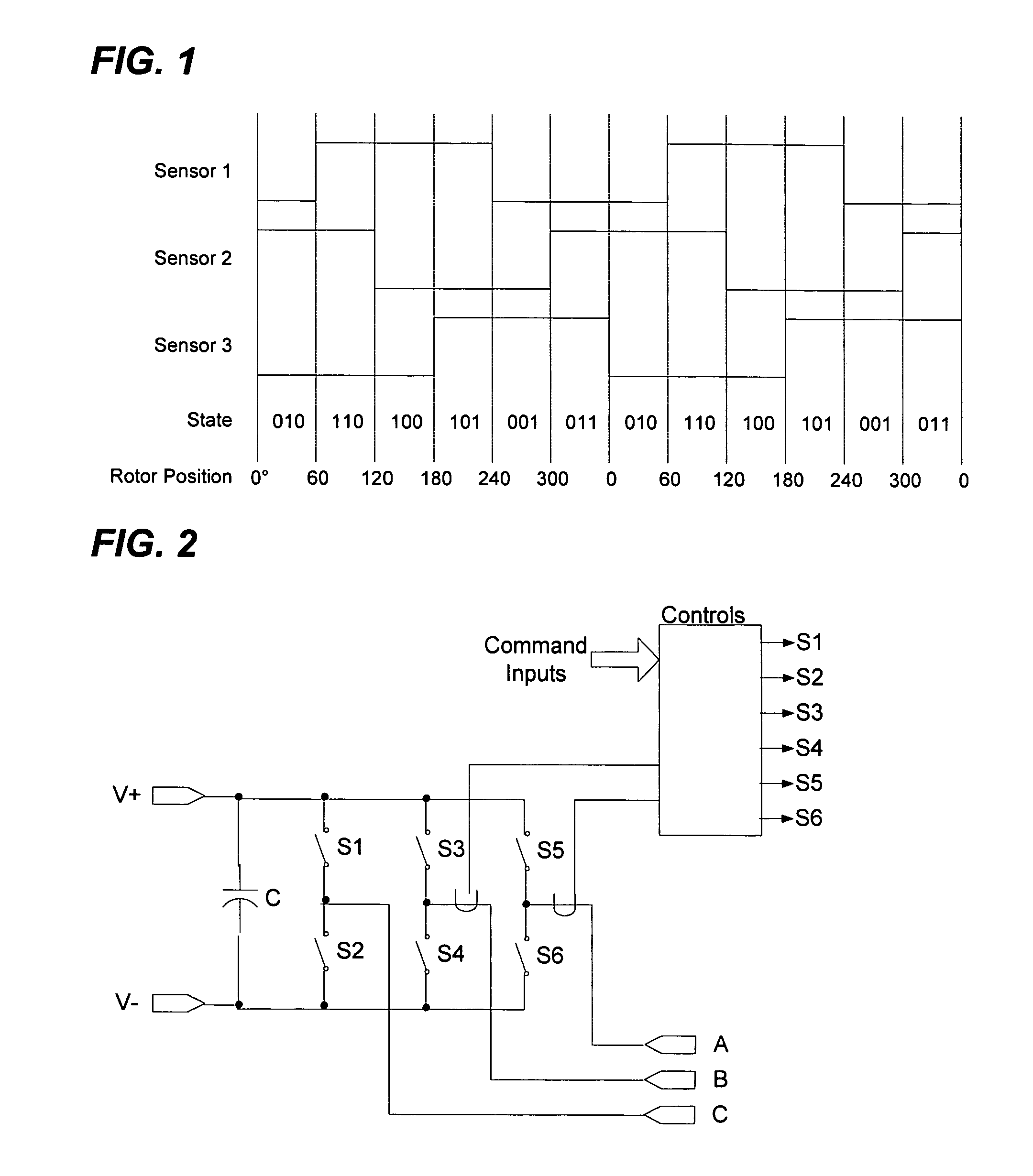Variable speed drive with a synchronous electric motor
a synchronous electric motor and variable speed technology, applied in the direction of motor/generator/converter stopper, electronic commutator, dynamo-electric converter control, etc., can solve the problems of increasing motor heating and acoustic noise, increasing costs, and producing significant torque ripples, so as to reduce the resolution of the required rotor position sensor, smooth transition, and high speed
- Summary
- Abstract
- Description
- Claims
- Application Information
AI Technical Summary
Benefits of technology
Problems solved by technology
Method used
Image
Examples
Embodiment Construction
[0020]The present invention comprises a polyphase electric motor equipped with plural binary output position sensors, configured such that each sensor asserts its output over a fixed angular range. Common sensors used for this purpose are Hall-effect devices exposed to the rotor's magnetic field and optical encoders. The ranges over which the sensors assert their outputs are by design or are determined during a motor calibration procedure. When multiple sensors are used, their ranges partially overlap, and the rotor position can be known to be within a reduced angular range based on the state of the sensors. For three phase synchronous motors it is common to use three sensors, arranged so that one of the three sensors changes state every 60°. With such an arrangement the rotor can always be known to be within a 60° range. This is illustrated in FIG. 1.
[0021]A second aspect of the preferred embodiment of the invention is a polyphase inverter. This inverter includes control means to p...
PUM
 Login to View More
Login to View More Abstract
Description
Claims
Application Information
 Login to View More
Login to View More - R&D
- Intellectual Property
- Life Sciences
- Materials
- Tech Scout
- Unparalleled Data Quality
- Higher Quality Content
- 60% Fewer Hallucinations
Browse by: Latest US Patents, China's latest patents, Technical Efficacy Thesaurus, Application Domain, Technology Topic, Popular Technical Reports.
© 2025 PatSnap. All rights reserved.Legal|Privacy policy|Modern Slavery Act Transparency Statement|Sitemap|About US| Contact US: help@patsnap.com



